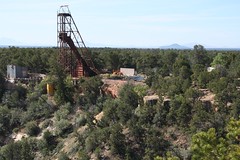
Storing energy effectively lies at the heart of our contemporary quest for escaping fossil fuel addiction. Two of the most promising alternative energy sources, wind and solar, are inconsistent throughout the day or week or month. Without a means of capturing the energy so generated for those times when the sun doesn't shine or the wind doesn't blow, the potential is diminished. And the vast promise of electric cars hinges on the ability to extend their range sufficiently so you don't run out of power on the way home from work.
Lee Hart, a self-employed electrical engineer profiled in a recent Mother Jones article,
A Charge to Keep, tracks the progress of battery technology from his basement lab. What he has learned in the course of rigorous testing is enlightening.
Britt Robson, the writer of this piece, nurses out the crux of the problem:
Hart has heard the dreamers wax on about a time when batteries will run for days on end, revolutionizing plug-in cars, windmills, and solar panels—just about any source of alternative energy would benefit from good batteries, which allow electricity to be stored and transported. He has sympathy for those visions. A motto of his hero, Thomas Edison, is inscribed on a favorite sweatshirt: "To invent you need a good imagination and a pile of junk." Like most electro-geeks who'd rather tinker than strut, he also adheres to Edison's practical DIY ethos, which explains the battery room and the small fleet of electric cars he has either retrofitted or built from scratch. His tests invariably reinforce what he and most everyone else familiar with the battery market have long known. When it comes to practical applications for sustainable energy, batteries are more of an Achilles' heel than a panacea, because we are running 21st-century technology with what is essentially 18th- or 19th-century chemistry.
Hart's work is leaning toward extending available battery power by creating light, structurally solid automobile frames, favoring efficiency over raw power.
But the main innovation in Hart's car has nothing to do with how it's powered—it'll be compatible with any kind of battery—but rather with its strong and lightweight frame, influenced by the ultraefficient "hypercar" philosophy of environmentalist Amory Lovins. "If I make the car lighter, I still get the fuel economy I'm looking for," notes Hart. In other words, for now, the best way to get more out of batteries is to simply demand less of them.
Improved efficiency could make a tremendous contribution to reducing our energy-consumptive habits, as has been thoroughly documented by the
Rocky Mountain Institute, providing savings in home and business heating and cooling, industrial operations, and transportation. And even the variability of solar and wind power is not as straightforward as you might think, as this RMI article,
Rethinking the Reliability of Solar and Wind Power, points out.
The solutions are out there, if only we'd take advantage of them.



